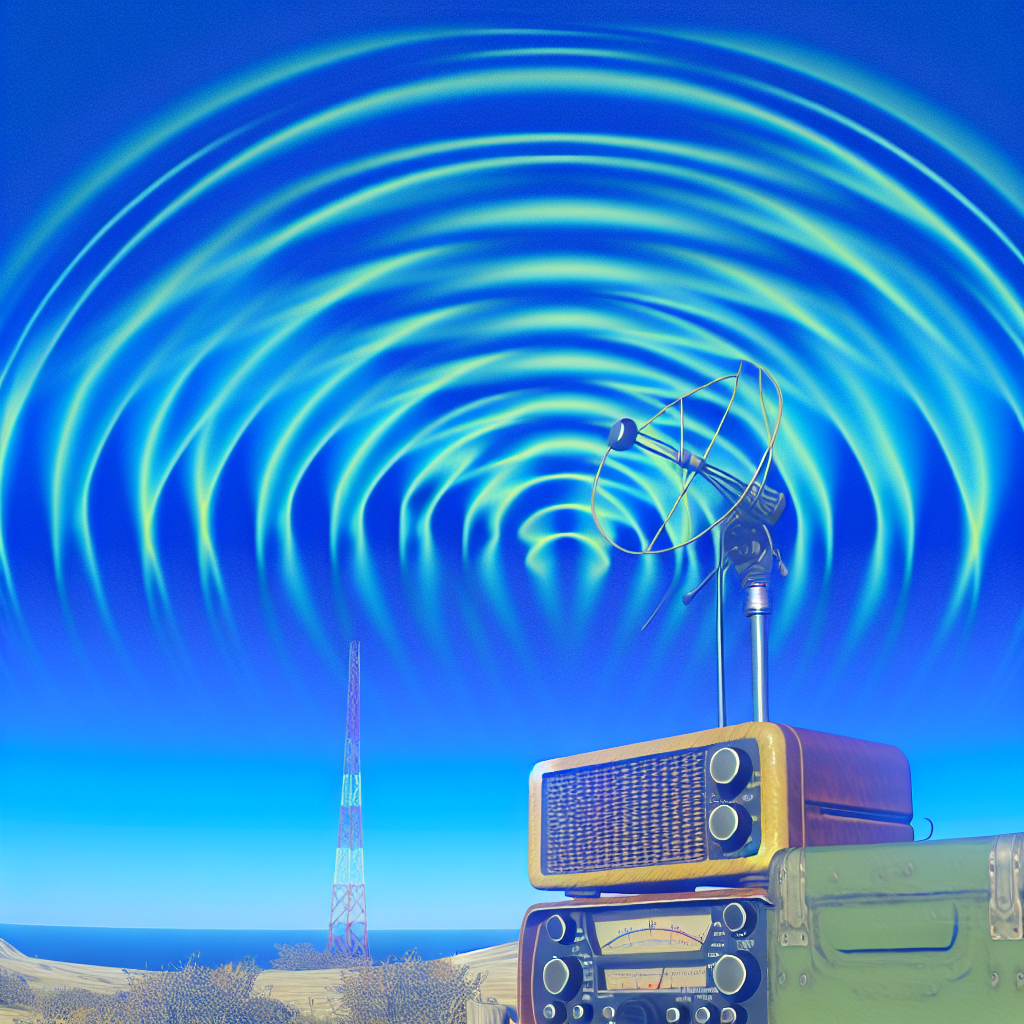Radio communication has played a crucial role in connecting the world through shortwave and HF radio, transcending geographical boundaries. From the foundational concepts of the radio frequency bands to practical antenna tuning techniques, let’s delve into this fascinating realm of long-distance communication.
Understanding Shortwave Radio and HF Communication
Shortwave radio and HF communication serve as the backbone for long-distance audio transmission across the globe. Operating within the range of 3 to 30 MHz, shortwave radio uniquely utilizes ionospheric reflection to enhance signal propagation, allowing for communication far beyond the radio horizon. Unlike VHF or UHF frequencies, which are typically limited to line-of-sight transmissions, HF radio can reach international audiences, making it indispensable for amateur operators and emergency services alike. Portable receivers like the Tecsun PL-880 and vintage models such as the Grundig provide enthusiasts with tools to explore this vast spectrum, enhancing connectivity for travelers and rural communities, thus expanding the art of shortwave listening and DXing.
Radio Frequency Bands and Their Significance
The radio frequency spectrum is a finely divided resource governed by regulations intended to minimize interference and allocate frequencies for specific uses. In the realm of amateur and professional radio, frequencies are classified into various bands, including HF (3-30 MHz), which is crucial for shortwave communication. Different bands serve distinctive purposes; for example, 3.5-4 MHz is often used for amateur radio, while the 9-12 MHz range is popular for international broadcasts. Regulatory bodies like the FCC and ITU oversee these allocations, enforcing rules to maintain order in a crowded spectrum, thus facilitating efficient communication. Understanding these facets helps enthusiasts utilize their equipment effectively, especially in emergency situations where reliable communication can be paramount.
Decoding Radio Propagation Techniques
Understanding radio propagation is vital for effective shortwave and HF communication. One of the primary methods of radio wave travel is **skywave propagation**, which relies on the ionosphere to reflect radio waves back to Earth. This phenomenon enables signals to cover vast distances, making it crucial for global communication.
During daylight, the ionosphere can absorb lower frequency signals, while higher frequencies can skywave propagate efficiently, especially during nighttime. This is essential for **DXing** enthusiasts who seek to connect with distant stations across continents, tapping into the radio spectrum’s potential.
Devices such as the **Tecsun PL-880** and **Sony ICF-SW7600** leverage this technique, allowing listeners to capture international broadcasts and news. Understanding how variations in **solar activity** and atmospheric conditions affect skywave propagation is key for amateur radio operators and those engaged in emergency communications, enhancing their chances of successful **signal reception** in diverse environments.
The Art of Antenna Tuning and Signal Reception
Antenna tuning is a crucial skill in shortwave radio communication, facilitating optimal signal reception even under challenging conditions. To maximize clarity and range, it is essential to match the impedance of the antenna with the transceiver, usually through an antenna tuner. This device adjusts the standing wave ratio (SWR), allowing the radio to transmit and receive signals more efficiently.
When encountering interference or weak signals, using a high-quality tuner can enhance performance. Employing various antenna types, such as dipoles or verticals, enhances versatility, especially in Dxing. Moreover, portable shortwave radios, including models like the Tecsun PL-880 and Sony ICF-SW7600, often come equipped with built-in tuning units that streamline the tuning process, ensuring reliable signal reception. Understanding these elements empowers enthusiasts in the global radio broadcast landscape, ultimately enhancing their shortwave listening experience.
Shortwave and Emergency Communication Systems
Shortwave radios are essential in emergency communication and disaster preparedness, providing a reliable method of broadcasting and receiving information when conventional systems fail. During natural disasters, such as hurricanes or earthquakes, power lines and cell towers are often compromised. In these scenarios, shortwave radios maintain connectivity by accessing international news broadcasts and emergency updates. Their ability to communicate over vast distances, aided by appropriate antenna setups, makes them invaluable in rural areas where other communication forms may be scarce. Portable and durable models, like the Tecsun PL-880 and Grundig radios, are optimal for on-the-go communication, ensuring that users remain informed and connected, even amidst chaos.
Looking Back
Shortwave and HF radios empower communication across vast distances, crucial in emergencies, international broadcasting, and as a hobby. Whether for survival or leisure, understanding radio’s frequency magic unlocks global conversations.

Leave a Reply
You must be logged in to post a comment.